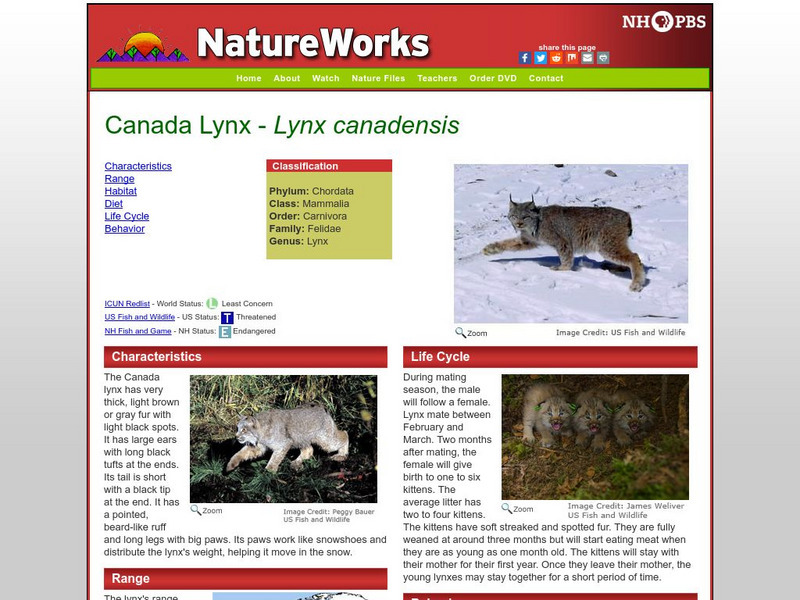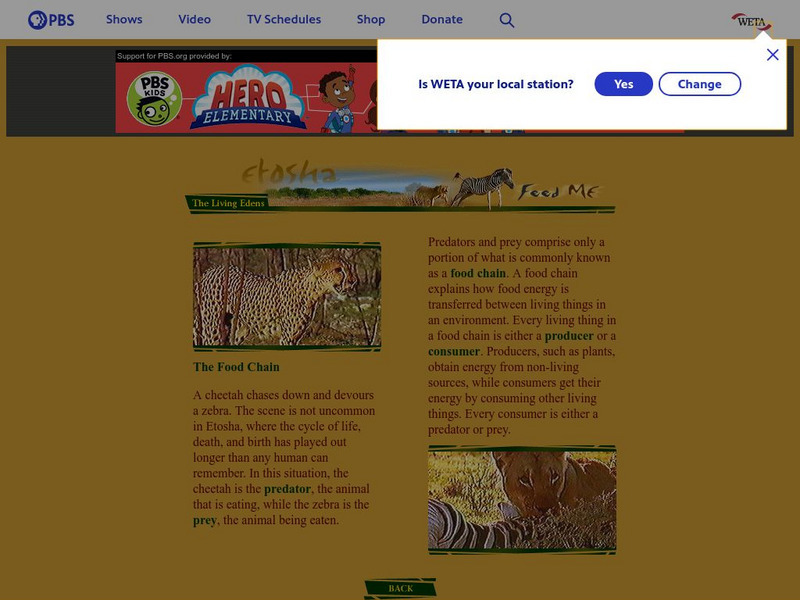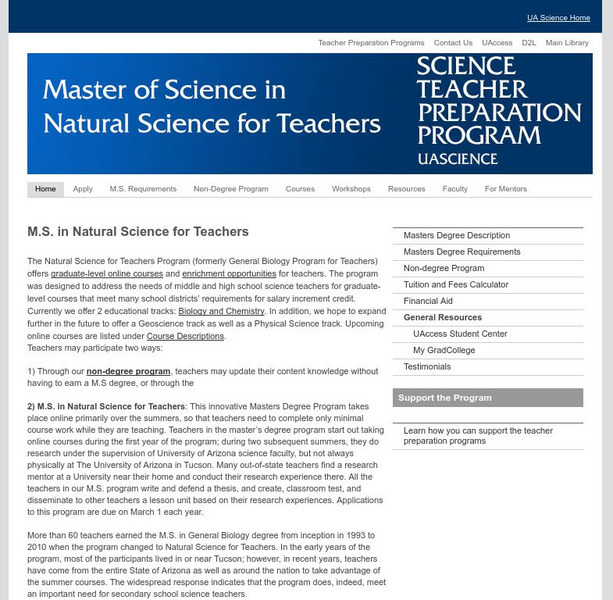Hi, what do you want to do?
Project Britain
Primary Homework Help: Food Chains Quiz
Brush up on food chain vocabulary before taking this interactive quiz. Check the box for the correct answers throughout the assessment.
PBS
Pbs: Nature: Interactive Game: Toki's Survival Challenge
As part of the larger Nature site that follows orphaned cheetahs, this interactive game lets you see what it is like to hunt like a cheetah. You'll find that it is not easy to catch an impala.
PBS
Nh Pbs: Nature Works: Canadian Lynx
Explore this educational resource to learn about the Canadian Lynx. Students will increase their knowledge of this small cat through information ranging from characteristics to diet and beyond.
Alabama Learning Exchange
Alex: Nocturnal Animals Lesson #4: Owls
During this instructional activity, students will visit various Internet sites to learn facts about owls. They will use this information to draw a picture of the owl food chain, dissect owl pellets, and write a poem about owls.
CK-12 Foundation
Ck 12: Life Science: 12.8 Predation
Understand the predator-prey relationship in an ecosystem.
CK-12 Foundation
Ck 12: Biology: Predation
[Free Registration/Login may be required to access all resource tools.] Discusses how predation affects population size and evolution.
SRI International
Performance Assessment Links in Science: Follow Those Tracks
This lesson plan requires students to make an inference (hypothesis) about two animals based on the tracks they leave behind. Students are asked to write a story explaining their inference.
PBS
Pbs: The Living Edens: The Food Chain
PBS site provides some basic information on the food chain.
University of Arizona
Univ. Of Az: Spiders: An Organism for Teaching Biology
Young scholars capture spiders and then conduct various experiments to identify their spider, analyze its feeding rate, and discover its effect on populations of insects. Includes directions for student activities and teaching tips.
Other
Kathy's Critters: Predator Prey Bottle Column
Learn how to make a predator prey column out of 2 liter bottles. You can actually see the predator find the prey!
Annenberg Foundation
Annenberg Learner: Ecology Lab
Build your own ecosystem, and explore the effects of these interrelationships.
Science Struck
Science Struck: A Bird's Eye View of the Desert Food Chain
Describes how a food chain works in a desert and how the Mojave desert food chain works in particular.
Science Struck
Science Struck: Food Chain in the Tundra Region
Describes the characteristics of a tundra biome, how a tundra food chain compares to a tropical food chain, and what the different trophic levels look like.
Other
Explore Learning: Food Chain Gizmo
In this ecosystem consisting of hawks, snakes, rabbits and grass, the population of each species can be studied as part of a food chain. Disease can be introduced for any species, and the number of animals can be increased or decreased...














